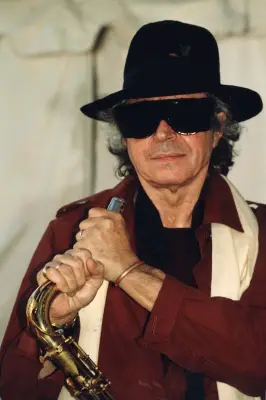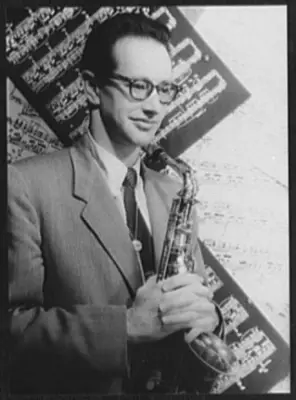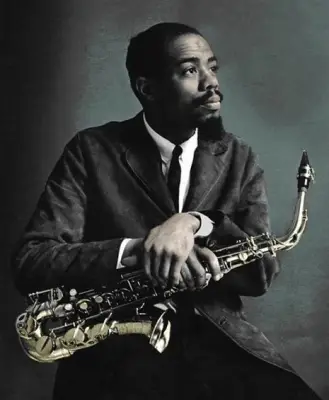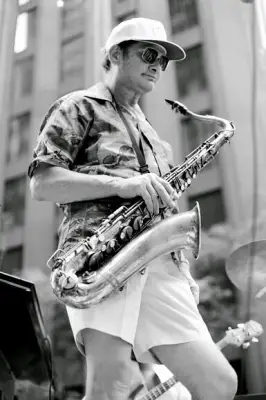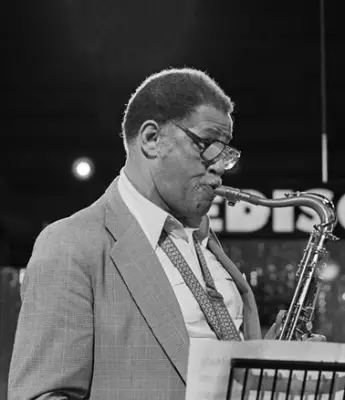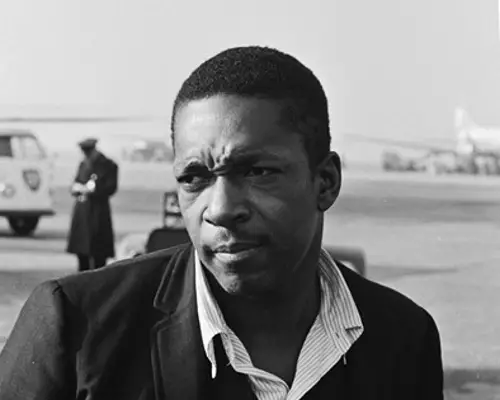
The Top 50 Jazz Saxophonists Of All Time
The saxophone is the most prominent instrument in jazz, and many musical geniuses have mastered it. So here today, we’re listing the 50 greatest jazz saxophonists of all time as chosen by NT Instruments.
Adolphe Sax, a 19th-century Belgian instrument manufacturer, would undoubtedly be surprised – and pleased, no doubt – at how the saxophone, which he discovered and patented in 1846, has become famous worldwide and was crucial to determining the sound of a 20th-century-born musical style known as jazz, if he were alive today.
Even a cursory glance at the list of musicians hailed as the best jazz saxophonists of all time reveals a number of one-of-a-kind talents who have helped take the music in new directions.
Sax, who invented several other wind instruments besides the saxophone – all of which bear his name – would have seen that the saxophone had often been adopted by military marching bands when he died in poverty in 1894, though his wish that it would play a prominent role in classical music orchestras wasn’t fully realized.
Despite the fact that marching band music was a portion of jazz’s foundation, the trumpet, instead of the saxophone, took the centre stage first. Only in the big-band swing era, when Johnny Hodges and Coleman Hawkins emerged as the finest jazz saxophonists of their time, did the saxophone (tenor and alto varieties) begin to play a major role.
In the mid-forties, however, it was altoist Charlie Parker who made a huge impact with bebop, a technically difficult and harmonically progressive modern form of jazz. Parker’s influence was widespread, and his explorations aided in the transformation of jazz from dance music to art. During the 1950s, a slew of virtuoso saxophonists followed in Parker’s footsteps, including tenor heavyweights Stan Getz, Sonny Rollins, and John Coltrane, who all elevated saxophone playing to new, higher stages of artistry while pushing jazz forward.
Despite the fact that this tenor trio’s (along with Parker’s) influence is impactful and continues to shape the saxophone’s narrative in jazz today, almost sixty years ago, there have been many highly skilled horn blowers – and there are many more on the way – each with their own sound, style, and approach to their instrument.
The saxophone, like the trumpet, is an iconic instrument in jazz, and one that has become completely synonymous with the genre due to its indelible musical associations.
So, here’s our top 50 jazz saxophonists of all time, in no particular order.
Contents
Top 50 Jazz Saxophonists
50. Gato Barbieri (1932-2016)
Argentina-born Leandro “Gato” Barbieri plowed a Coltrane-Esque avant-garde furrow with his raw, wailing tenor sax sound in the late 1960s before creating a more accessible form of music that embraced his Latin American roots. Barbieri’s music shifted to smooth jazz from the 1970s onwards, though his brooding tenor saxophone doesn’t ever lose its visceral intensity.
49. Pepper Adams (1930-1986)
Park “Pepper” Adams, a baritone specialist from Michigan, was a stalwart of the Detroit scene in the mid-1960s, where he performed with Donald Byrd. Between 1966 and 1977, Adams was a key member of the Thad Jones/Mel Lewis Orchestra, thanks to the deep sonorities and dark textures he developed on his baritone sax.
48. Rahsaan Roland Kirk (1935-1977)
Kirk’s multi-tasking skills meant that his prowess on the saxophone was missed. He was regarded as an eccentric blind maverick by some for performing on stage as a one-man band (he could play 3 horns at once and had a variety of exotic instruments dangling from his shoulders and neck), and his multi-tasking skills meant that his prowess on the saxophone was missed. He was, however, a fantastic tenor saxophonist who could play hard bop, modal jazz, and R&B, and easily earns his place among the best jazz saxophonists in the world.
47. Pharoah Sanders (born 1940)
Sanders, a tenor/soprano saxophonist, and flutist who was an acolyte of John Coltrane (with whom he played between 1965 and 1967) helped to bring a cosmic and deep spiritual vibe to jazz in the late 1960s and early 1970s. His place in the pantheon of best jazz saxophonists was cemented by a prolific purple patch at the Impulse! label among 1969 and 1974 (which yielded ten LPs). Sanders’ music was also influenced by music from other cultures.
46. Gerry Mulligan (1927-1996)
During his long and fruitful career, Mulligan’s resonant baritone sax appeared on uncountable recording sessions, including those by Miles Davis, Billie Holiday, and Dave Brubeck. Mulligan was a gifted arranger and innovator, collaborating with Chet Baker in 1950 on a piano-less quartet. He was integral to the more relaxed West Coast cool look.
45. Michael Brecker (1949-2007)
Brecker, a tenor saxophonist from Pennsylvania, was raised on a diet of jazz and rock, and as a result, he never recognized musical limits. In the 1970s, he co-led the funky Brecker Bros Band with his younger brother, Randy, and played on various pop and rock sessions (for everyone from Steely Dan to Art Garfunkel). He made records with more straight-ahead jazz feel towards the end of his life.
44. Jan Garbarek (born 1947)
This eminent Norwegian composer and saxophonist (who is an expert of both tenor and soprano sax) have had a long and successful association with the ECM label, which he has been with since 1970. In the 1970s, he gained international acclaim thanks to his collaboration with Keith Jarrett (he was a member of the pianist’s European Quartet). His music is both lyrical and melancholy.
43. Joe Lovano (born 1952)
The world’s finest jazz saxophonists’ youngest entry, Ohio-born Lovano can play a variety of instruments, though his name is synonymous with the tenor saxophone. He creates a sound that is both substantial and athletic, with a heartfelt soulfulness. Lovano is a supremely versatile musician who has performed in a wide range of musical settings and whose influences span bop to African music.
42. Arthur Blythe (1940-2017)
This Los Angeles altoist grew up on a strict diet of rhythm’n’blues and played in the bands of Gil Evans and Chico Hamilton before becoming a proponent of avant-garde jazz in the late 1970s. Despite this, Blythe’s music was always forward-looking, and he never forgot the traditions of the best jazz saxophonists before him. Blythe was a great composer as well as having a distinctive and emotionally intense reed sound.
41. Jimmy Heath (born 1926)
This Philadelphia saxophonist began his career in the 1940s and switched from alto to tenor sax to avoid comparisons with fellow bebopper Charlie Parker (his brothers are drummer Percy and bassist Albert Heath) (Heath was dubbed Little Bird for a time). Heath has performed with all of the jazz greats, including Miles Davis, Milt Jackson, and Freddie Hubbard, and he continues to do so today.
40. Charles Lloyd (born 1938)
Lloyd was born in Memphis, Tennessee, and began playing the saxophone at the age of nine. By the 1950s, he was a member of the touring bands of blues legends Howlin’ Wolf and B.B. King. In 1956, the saxophonist relocated to Los Angeles, where he eventually replaced Eric Dolphy in Chico Hamilton’s band four years later. At the same time, Lloyd began his solo career, and his incorporation of rock elements helped his music appeal to a wider audience. Lloyd’s music is edgier and more exploratory today than it was in the 1960s, and he is still performing.
39. Yusef Lateef(1920-2013)
Lateef pioneered the incorporation of musical elements from other cultures into his music, arriving in the world as William Huddleston. He loved Eastern music and, in addition to playing the tenor saxophone in a hard bop style, he was also a proficient flutist and oboist.
38. Harold Land (1928-2001)
This Texas tenor legend was a founding member of the trailblazing Clifford Brown/Max Roach Quintet in the early 1950s and later based himself in Los Angeles, where he decided to offer a more vigorous alternative to the West Coast’s omnipresent cool sound. After that, he teamed up with vibraphonist Bobby Hutcherson for a series of critically acclaimed collaborations. Land’s brooding tenor sound, like that of many of the best jazz saxophonists, was influenced by Coltrane’s intense level of expression.
37. Lee Konitz (born 1927)
Konitz was one of the few alto saxophonists who was unaffected by Charlie Parker’s bebop sound among the best jazz saxophonists of the late 1940s and early 1950s. He chose to plough his own distinct furrow instead. Konitz was a brilliant improviser who wove long, flowing skeins of the melodic line while incorporating subtle accent changes. He was initially considered a cool school adherent but afterward explored the avant-garde.
36. Illinois Jacquet (1919-2004)
Jean-Baptiste “Illinois” Jacquet, an alto player from Louisiana who was raised in Texas and then shifted to LA, was known for his staccato honking sound and catchy riffs. It was there, in 1939, that he was discovered by Lionel Hampton, the bandleader (who persuaded Jacquet to swap his alto for a tenor sax). On Hampton’s “Flying Home,” Jacquet’s rambunctious wild solo is widely regarded as the first recorded manifestation of what would become rhythm’n’blues.
35. Eddie “Lockjaw” Davis, (1922-1986)
Davis, a native of Culver City, California, was nicknamed Lockjaw because his saxophone seemed to be glued to his mouth during his long solos. He could play in a variety of styles, but his signature was a driving, blues-soaked hard bop. In the early 1960s, he released a series of combative but endearing duet albums with Johnny Griffin, his musical sparring partner.
34. Al Cohn(1925-1988)
Alvin Cohn worked with fellow tenor Zoot Sims for a long time, and the two were considered among the finest jazz saxophonists of the 1950s by Jack Kerouac, who asked them to play on his 1959 poetry album Blues And Haikus. Cohn rose to prominence in the late 1940s as a member of Woody Herman’s Second Herd with Sims and Stan Getz, and despite being born and grew up in Brooklyn, he became associated with the West Coast cool sound. Cohn’s signature saxophone tone was bright but full-bodied, and he poured rivulets of mellifluous melody from it.
33. Benny Carter (1907-2003)
Harlem-born Carter’s primary instrument was the alto saxophone, but he could also play trumpet and clarinet. He began his recording career as a sideman in 1928, but by the 1930s, he was leading his own swing band and writing sophisticated charts for them, which led to him doing arranging for Duke Ellington and Count Basie. A master of the saxophone’s swing.
32. Gary Bartz (born 1940)
Bartz is a saxophonist who hails from Baltimore, Maryland. He plays alto and soprano saxophones. When Miles Davis approached him in 1970, he was already recording as a leader for Milestone, having made his recording debut with Art Blakey’s Jazz Senders in 1965. Though Bartz’s style leaned toward more exploratory jazz in the early 1970s, his records became clearer and funkier as the decade progressed. He will be recognized as a soulful player who combined flawless technique with emotional depth among the best jazz saxophonists.
31. Sam Rivers (1923-2011)
Rivers was a multi-talented instrumentalist who played bass clarinet, flute, and piano in addition to tenor and soprano saxophones, making him one of the best jazz saxophonists in the world. When he played with Miles Davis in 1964, he caught the attention of many jazz fans. Following that, he recorded for Blue Note, transitioning from an advanced hard-bop style to the avant-garde.
30. Ike Quebec (1918-1963)
Quebec, a native of New Jersey, is best known as a seductive ballad singer who began his career in the 1940s with a breathy, intimate tone. He played with Cab Calloway for a long time and cut sides with Ella Fitzgerald and Coleman Hawkins before joining Blue Note in 1959 and recording some excellent albums before dying of lung cancer at the age of 44.
29. Lou Donaldson (born 1926)
This Charlie Parker-influenced North Carolinian tenorist began to make a name for himself in the 1950s, when his bluesy, soulful, and increasingly funkified hard bop style resulted in lots of notable Blue Note albums. Donaldson also appeared on recordings by Thelonious Monk, Clifford Brown, Art Blakey, and Jimmy Smith as a sideman.
28. Stanley Turrentine (1934-2000)
Though dubbed The Sugar Man, this Pittsburgh-born tenor man’s robust and earthy look, which revealed blues cries, gospel cadences, and the impact of R&B saxophonist Illinois Jacquet, was anything but sickly sweet. Turrentine mixed difficult bop and soul-jazz at Blue Note in the 1960s, then fused bop with Latin and pop music at CTI Records in the 1970s. Among the best jazz saxophonists, few could match Stanley Turrentine’s soulful playing.
27. Paul Desmond (1924-1977)
Between 1951 and 1957, this San Francisco-born alto saxophonist was a key member of the Dave Brubeck Quartet (he chose to write the group’s most popular tune, the big crossover hit “Take Five”), and his light delivery helped to define the West Coast cool sound. Desmond once compared the sound of his saxophone to a dry martini, which was amusing.
26. Earl Bostic (1913-1965)
Eugene Earl Bostic, an alto saxophonist from Tulsa, Oklahoma, got his big break in vibraphonist Lionel Hampton’s band the day before WWII. Bostic’s fat, earthy tone and fluid, the blues-infused style had a great influence on a young John Coltrane, who spent his early years in his band. Bostic was a huge hitmaker in the postwar R&B scene, with several hits in the United States.
25. Sidney Bechet(1897-1959)
Bechet began his musical career on the clarinet and made an early impression before switching to the then-unfashionable and rarely heard soprano saxophone after discovering one on tour in a London junk shop in 1920. He made his 1st recordings shortly after, and his reedy soprano blowing, which had a tremulous vibrato and emotional intensity, caught the ear. Bechet is the only saxophonist on this list who was born in the 18th century, and he holds the distinction of being the only significant saxophonist in jazz.
24. Eric Dolphy (1928-1964)
Dolphy died at a young age (he was 36 when he died of a fatal diabetic coma), but his music’s reverberations can still be felt today. He was a virtuoso on the flute and bass clarinet, but he was also a fantastic alto saxophonist with a creative approach who first came to the public’s attention when he began playing with John Coltrane in the 1960s. Out To Lunch, Dolphy’s Blue Note album is regarded as a touchstone of avant-garde jazz, and his impact has spread beyond the genre.
23. Albert Ayler (1936-1970)
Despite the fact that this Ohio free jazz and avant-garde saxophonist (who played the tenor, alto, and soprano varieties) didn’t live to see his 35th b’day, his music and impact are still felt in jazz almost 50 years later. Ayler patented a unique saxophone style that was raw, raucous, eerie, and powered by primal energy, drawing on the gospel, blues cries, and marching band music.
22. Zoot Sims (1925-1985)
John “Zoot” Sims, a tenor saxophonist from California, fused Lester Young’s smooth and mellow approach to jazz improv with the language of hard bop while filtering it through a cool West Coast sensibility. He was a member of a number of big bands, including those led by Artie Shaw, Stan Kenton, and Buddy Rich, and he was always open to working on projects with other saxophonists.
21. Gene Ammons (1925-1974)
Gene “Jug” Ammons, dubbed “The Boss,” was born in Chicago and was the son of boogie-woogie piano master Albert Ammons, but he was drawn to the tenor saxophone and began his career in the 1940s. Ammons was a prolific recording artist who embraced funkified soul-jazz in the 1970s, adhering to hard bop but with a style full of blues feeling.
20. Benny Golson(born 1929)
Benny Golson is still blowing tough and strong at the age of 88. In the late 1950s, the Philly-born tenorist made his mark with Art Blakey’s Jazz Messengers, and he was a fine composer, responsible for the classic tunes “I Remember Clifford,” “Killer Joe,” and “Along Came Betty,” among others.
19. Cannonball Adderley (1928-1975)
When Florida-born altoist Adderley visited New York in 1955, he caused a stir and was quickly signed to record the first of many albums that would follow over the next two decades. He was a disciple of Charlie Parker, like many of the best jazz saxophonists of his generation, but he developed his own style, a soulful blend of pop, gospel, and blues influences. In 1959, he was a member of Miles Davis’ iconic modal jazz manifesto Kind Of Blue, but he later became a soul-jazz purveyor. Adderley’s music became more experimental in the late 1960s and early 1970s.
18. Hank Crawford (1934-2009)
Benny “Hank” Crawford, a Memphis-born musician, was a leading soul-jazz alto saxophonist in the 1960s and 1970s. In 1958, he got his big break when he joined Ray Charles’ band (where he played baritone sax), which helped launch his solo career at Atlantic Records. Crawford’s expressive, blues-inflected sound influenced David Sanborn, a modern alto great.
17. Sonny Stitt (1924-1982)
Boston-born Stitt began his recording career as an alto saxophonist near the end of the 1940s, at the dawn of bebop. Stitt’s florid, mellifluous style has been compared to Charlie Parker’s (many have accused him of copying Parker), but after switching to the tenor sax, he began to develop his own voice. An unafraid improviser.
16. Ben Webster (1909-1973)
Ben Webster’s forceful style of playing was tempered with a high level of tenderness, mainly on ballads, despite his nickname “The Brute.” Webster’s bluesy tenor saxophone sound is one of the most easily recognized in jazz, with its breathy timbre, virile tone, and broad vibrato. He was a featured soloist in Duke Ellington’s Orchestra for several years, an important ensemble that produced great saxophonists like Kenny Garrett.
15. Wayne Shorter (born 1933)
Between 1971 and 1986, this Newark, New Jersey-based composer and saxophonist (who alternates between soprano and tenor) rose to mainstream prominence as a member of fusion giants Weather Report. Shorter studied at Art Blakey’s “hard bop academy” before joining Miles Davis’ Second Great Quintet as a composer/player between 1962 and 1968. His voice is both powerful and elegant.
14. Ornette Coleman (1930-2015)
When Texas-born Coleman arrived in New York in 1959, armed with a plastic alto saxophone and the revolutionary concept of free jazz, he caused a stir in the jazz world. Coleman’s crying alto sound was always steeped in the sound of the blues, despite the fact that he liberated jazz both melodically and harmonically.
13. Jackie McLean (1931-2006)
McLean’s sinuous alto saxophone style, with its lissom Charlie Parker-influenced inflections, caught Miles Davis’ ear in 1951, and the trumpet legend included the then-16-year-old saxophonist on his Dig! LP. McLean began recording under his own name in 1955, making a name for himself as a young hard bopper. McLean began to broaden his expressive palette and musical horizons as the 1950s gave way to the 1960s by venturing into more experimental, avant-garde territory. Among the world’s finest jazz saxophonists, his legacy is one of the most essential.
12. Johnny Hodges (1907-1970)
In 1928, Johnny Hodges joined Duke Ellington’s band, where he made his career. Ellington’s smooth, soulful alto saxophone sound, with its wide, emotive vibrato – which he once claimed “was so lovely that it brought a tear to the eyes” – was featured on many Duke recordings, including “A Prelude To A Kiss.” Fans included Charlie Parker and John Coltrane.
11. Joe Henderson (1937-2001)
Henderson’s tenor voice was distinctive: it was loud, robust, and virulent. Henderson, a native of Ohio, made his name as a hard bop pioneer at Blue Note in the early 1960s, where he also recorded with Horace Silver (his solo can be heard on Silver’s “Song For My Father”). Henderson’s music also included Latin elements, and in the 1970s, he moved into a freer, more exploratory mode of jazz.
10. Johnny Griffin (1928-2008)
The Chicago-born Griffin’s prowess on the tenor saxophone earned him the nickname Little Giant, despite his diminutive stature. Griffin, a pioneer of hard bop, began his solo career in the 1950s and later relocated to Europe, where he remained until his death. He was an intrepid improviser with a commanding but mobile sound.
9. Hank Mobley (1930-1986)
Mobley, who was born in Georgia and raised in New Jersey, first caught the attention of jazz fans in the early 1950s as a founding member of The Jazz Messengers, before going on to record 25 albums for Blue Note. Mobley’s sonorous, well-rounded tone earned him the title of The Middleweight Champion Of The Tenor Saxophone, despite being less belligerent in his attack than Coltrane and Sonny Rollins, though not as smooth or silky as Stan Getz.
8. Art Pepper (1925-1982)
Pepper’s rise to stardom began with stints in Stan Kenton’s bands, and he was a leading light of the postwar West Coast US jazz scene. Pepper’s career, like that of many other jazz musicians in the 1950s – including many of the best jazz saxophonists of the time – was marred by drug addiction. Even a few stints in prison couldn’t dull the lyrical beauty of his distinctive alto saxophone sound, which had bebop roots.
7. Coleman Hawkins (1904-1969)
This influential Missouri-born tenor saxophonist, known as Bean or Hawk, was instrumental in the growth of the saxophone as a viable solo instrument. His recording of “Body And Soul” in 1939, which featured an elongated solo that improvised on, around, and beyond the song’s melodic line, was a game-changer, paving the way for musicians like Charlie Parker. Hawkins played in a bop style from the mid-40s onwards, despite his association with a big-band swing. His voice was big, beefy, and breathy.
6. Lester Young (1909-1959)
Young, a hipster who spoke with his own “jazz speak” argot and hailing from Woodville, Mississippi, rose to prominence during the swing period of the 1930s, playing with Count Basie and Fletcher Henderson. His airy, lightly flowing style and smooth, mellow tone influenced a generation of tenor players, including Stan Getz, Zoot Sims, and Al Cohn. Young is known as the tenor sax’s Poet Laureate.
5. Dexter Gordon (1923-1990)
It’s no surprise that this Californian doctor’s son was dubbed Long Tall Dexter, standing at a towering 6 feet 6 inches. Gordon, who starts his recording career in the 1940s, was the first significant bebop tenor saxophonist. Gordon’s forte was ballads, which allowed his rich, emotive tone to convey a poignant lyricism, despite his ability to swing with aplomb.
4. Stan Getz (1927-1991)
Despite his Philadelphia roots, Getz rose to prominence as the preeminent tenor saxophonist of the 1950s US West Coast cool school scene. His seductive, wonderfully lyrical tone, combined with his velvet-smooth, effortless style à la Lester Young, earned him the moniker The Sound. Getz was a supremely versatile musician who could play bop, bossa nova (which he helped to mainstream in the United States, not least with the album Getz/Gilberto and its iconic hit “The Girl from Ipanema”), fusion, and even pop records as a guest.
3. Sonny Rollins (born 1930)
Rollins’ tenor saxophone has been silent since 2012 due to a form of lung disease, but he remains the last great saxophonist of jazz’s great era. His career took off in the 1950s when he was born Walter Theodore Rollins in New York, and his big, robust sound, combined with his gift for melodic improvisation, earned him the moniker Saxophone Colossus.
2. John Coltrane (1926-1967)
Coltrane rewrote the book on how to play the tenor saxophone and popularised the soprano version of the instrument. After Charlie Parker, he became the most important jazz saxophonist after starting out as a bar-walking blues player. During the mid-to-late 1950s, Coltrane rose to prominence with Miles Davis’ group, while also pursuing a solo career that culminated in the release of A Love Supreme, one of the most iconic jazz albums of all time. His flamboyant, effusive style was often compared to “sound sheets.” Coltrane’s music evolved over time, progressing from hard bop to modal, spiritual jazz, and avant-garde.
1. Charlie Parker (1920-1955)
The man simply known as Bird is at the top of the list of the greatest jazz saxophonists of all time. Who knows what he could have accomplished if he had lived longer than 34 years. This Kansas City altoist was a key figure in the postwar jazz revolution known as bebop, which began in New York in the mid-1940s and would shape the genre’s trajectory for decades. Parker’s ornate style and prodigious technique, which combined melodic fluency with chromatic and harmonic ingenuity, had a significant impact. Despite the fact that he has been dead for over six decades, no other saxophonist has ever surpassed him in terms of importance.
- Viola vs Violin – 5 Key Differences Between The Two Instruments - March 20, 2024
- 15 of the Most Famous Violinists of All Time (18th Century to Present) - March 20, 2024
- Full School Band Instruments List (Elementary / Middle / High) - March 18, 2024

